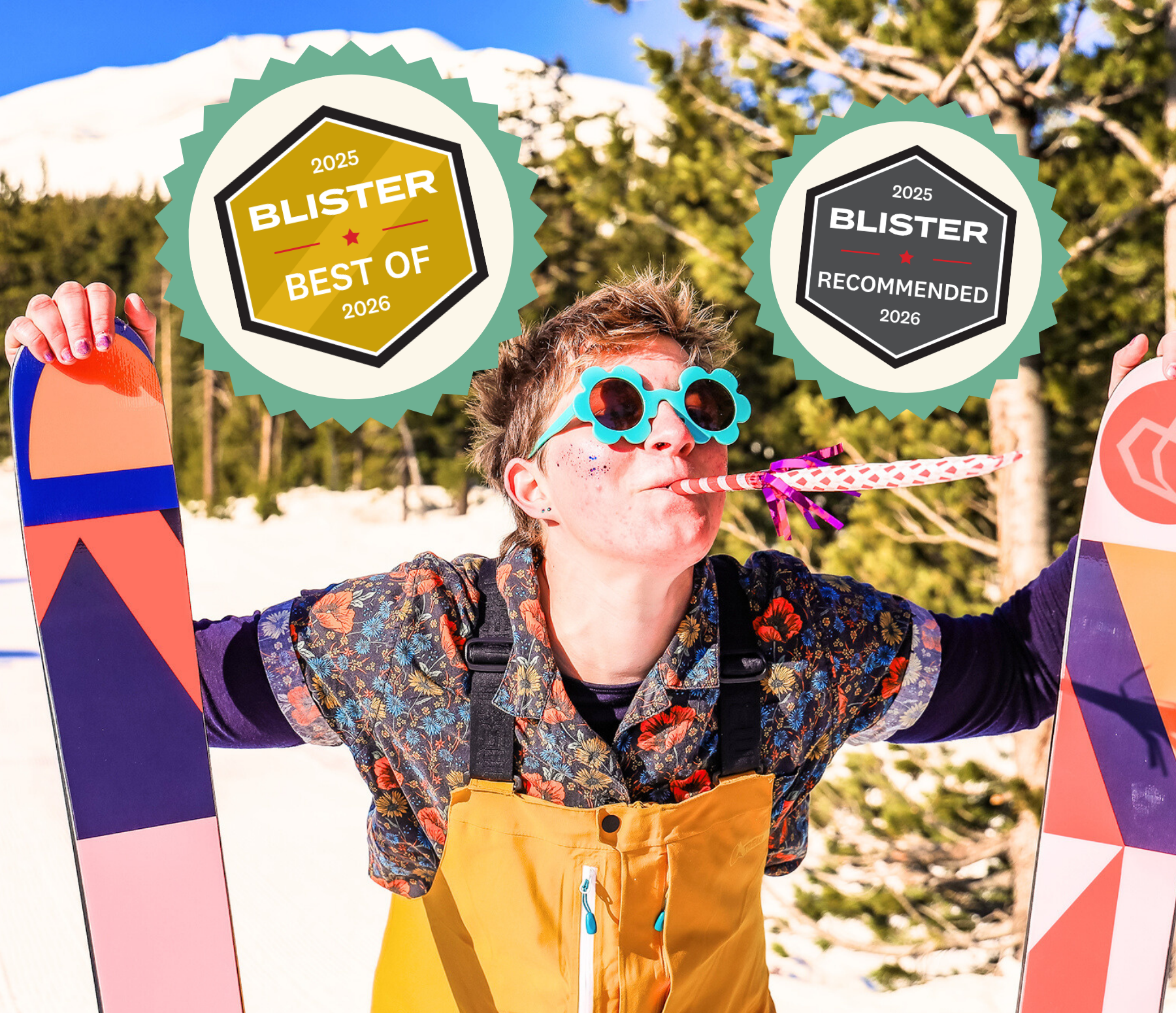By Jen Gurecki, CEO of Coalition Snow | Originally published in SNEWS in the HER Voice series | Photo by Lauren McMillin
Take a look around you. Whether you realize it or not, you’re likely surrounded by women who have started their own businesses. According to the 2018 study “State of Women-Owned Business Report,” commissioned by American Express, four of every 10 U.S. businesses are owned by women and they generate $3.1 trillion in revenue.
But there’s a catch. Their success often depends on how male-dominated their industry is and even our notions of whether the stuff they make are “masculine” or “feminine” products. A new study out of Stanford University, “Gender Inequality in Product Markets: When and How Status Beliefs Transfer to Products,” by Elise Tak, Shelley J. Correll, and Sarah A. Soule suggests that our innate gender bias when it comes to products might make us devalue, say, a craft beer or even a ski, if we know that product was made by a woman.
The data driving the discussion
Consider this: According to a March 2019 survey by Thumbtack that gathered data from over 900 women in the U.S., 48 percent of female small business owners in male-dominated industries report that their expertise has been questioned because of their gender, where only 5 percent of men say the same. That number is even higher for black women at 58 percent.
The economic challenges that women in male dominated industries face doesn’t surprise Tom Moreno, the head of marketplace at Awayco, a membership platform that allows people to search and reserve gear from their global network, and the former lead buyer in snowsports for evo. Moreno, who has spent more than 10 years working with brands and retailers, has seen gender bias unfold in numerous ways: customers looking for a more technical product deferring to men on the sales floor as they actively find ways to work around women; retail shops not carrying products made by women; women not being able to find jobs as sales reps. He wants to set the record straight: That the guttural feeling that women have of being judged, overlooked, and discounted in the outdoor industry experience is not in our heads.
These experiences have been validated as real (not just perceived) challenges by the findings revealed in the peer-reviewed journal article “Gender Inequality in Product Markets: When and How Status Beliefs Transfer to Products.” In three separate studies detailed in the article, the researchers discovered that women who create products in male-dominated industries are disadvantaged by the status belief that they are less competent than men. In the first study they gathered 50 product categories from a large on-line realtor and had participants rate each product’s association with femininity and masculinity. In studies two and three, they simulated stereotypical male and female-typed products (craft beer and cupcakes, respectively). They labeled the products exactly the same except for changing the name of the founder to either a male or a female. What they found was that the participants (made up of both men and women) stated they would pay less for the craft beer made by a woman, and perceived it to be lower quality than if made by a man. However, when it came to cupcakes, the female founder and male founder did not show a significant difference.
Another finding from one of the studies is that when the beers both had an award associated with them, the gap in perceived quality was eliminated between the genders. In other words, products made by women are seen as equal to those made by men when a third party validates them with an award.
Little did we know it would take a study about cupcakes and beer to reveal what those of us women who design products in the outdoor industry have known since we launched our businesses.
Unconscious bias in the outdoor industry
When I started Coalition Snow, a women-founded and women-led ski and snowboard company, I was given advice to put a man at the forefront of my company. Although I seriously considered it, particularly when we were raising our first investment round, I decided against it. It’s something that I still grapple with every time we’re asked if Coalition skis are any good or if we were “just a marketing company,” questions that my male counterparts in snowsports rarely have to tackle. While we’ve found support through larger retailers like evo, Backcountry, and REI, and we’ve made Powder Magazine’s Best Women’s Ski list two years in a row, we’ve never been able to secure a single sale with one of the hundreds of specialty outdoor retail shops in North America.
Finally, outside of our paid placements, there have been only a few mentions of our equipment or company in the mainstream outdoor media. Against all odds, we’ve carved out a space for ourselves in this industry. Reading the Stanford study brought me relief as I saw that the challenges we’ve faced at Coalition Snow were not just a matter of perception. It confirmed that gender bias affects gear-makers and poses additional barriers for women in hard goods. Those of us who exist outside of the cis-gendered, white male story of the outdoors are finding ways to shift the narrative. The outdoor industry is witnessing a narrative change that is accelerating at a pace that will leave those behind who don’t diversify the stories they tell.
There is a certain amount of gaslighting that women in the outdoor industry face, and entrepreneurs new to the scene, like me, aren’t the only ones who experience it. Brook Hopper, global marketing manager at Liv Cycles, said “I constantly find myself having to rationalize my existence. People say that you don’t need to have a bike company specific for women…But when I was at The North Face no one was ever asking why we were making women’s products.” This is the double standard that the research sheds light on. Hopper’s experience with bias—that exists for women in male-dominated industries does not exist for men in women-specific categories—was noted in the Stanford study as well. That’s why men can bake cupcakes or fly their fashion flag high and society barely blinks.
Hopper understands why this bias exists because she used to believe that women’s products were inferior herself. “When I was the one woman working at the bike shop, I wouldn’t ride a woman’s bike because I needed to prove that I was strong and tough and that I didn’t need a woman’s bike. Coming to Liv was an eye-opening experience.” Through working with the professional athletes Liv sponsors, Hopper has seen first hand how well products designed by women can perform. The research speaks to Hopper’s beliefs. Gender bias doesn’t only exist in the minds of men. It’s beyond the simplistic man-against-woman paradigm; gender bias permeates the beliefs of people regardless of their gender identity.
Aparna Rajagopal-Durbin, Founding Partner of The Avarna Group, a consulting firm that provides insights and resources on equity, diversity, and inclusion for organizations, said that she has even seen people who are well-versed in social justice issues not recognize their own bias. Unconscious bias is just that – unconscious. And that is the problem: Bias does not present itself as blatant acts of sexism or aggression, she said; it’s unconscious and it shows up everywhere in subtle interactions.
As humans develop, we need to categorize information to make decisions quickly. That’s how bias develops. We have biases about things as simple as food, and as complex as groups of people. Conscious bias leads us to make choices such as coconut milk over goat’s milk; unconscious bias plays out differently. We don’t realize our biases are the reason we think the woman walking into the doctor’s office is a nurse.
How does unconscious gender bias play out in real life in our industry? In addition to the ways Moreno mentioned (customers deferring to men, shops not carrying products made by women), Rajagopal-Durban sees it in the design and color of products, the naming of products, the way focus groups are organized, the selection of brand ambassadors and athletes, and the way that companies tell their origin stories through a masculinized narrative.
The economic opportunity of tackling gender bias
With women gaining economic power, driving decision making in the home and workforce, and making up nearly half of outdoor participants, acknowledging bias and finding ways to overcome it are paramount not only if you want to remain relevant, but thrive. According to the Harvard Business Review, women control about $20 trillion in annual consumer spending, and that figure could climb as high as $28 trillion in the next five years. Their $13 trillion in total yearly earnings could reach $18 trillion in the same period.
Chipping away at gender bias extends far beyond a moral imperative. “If retailers want to have more women in their stores, which just makes economic sense, they have to be able to speak to a woman’s point of the view the best they can,” Moreno said. “The people who make decisions that affect their business economically need to challenge themselves to be the best leaders they can be and help their businesses by having a different view.”
In order to do this, we need to actually grapple with the bias itself. “We have to constantly do the work. It’s not like you just get your teeth cleaned…you have to proactively and consciously learn about these things. There’s so much dominant narrative being thrown at us,” Rajagopal-Durban said. The science behind this shows that we make these associations in our head because we’re flooded with information daily that reinforces these gender stereotypes. But we can rewire our brains, she said.
4 ways to battle unconscious gender bias
Rajagopal-Durban and others suggest that we can consciously integrate anti-bias strategies into the DNA of our organizations with the following tactics.
- Support the storytelling of women in our own brands by ensuring they are equally represented in ambassador and athlete teams, in social media feeds, and in marketing copy and imagery.
- Expose ourselves to women who are doing amazing things by listening to podcasts, attending panels, and reading articles that highlight the work and adventures of women.
- Celebrate, credit, and tell the stories of women making important contributions to your company. And, be mindful of masculinizing stories or centering men who contributed to a success but didn’t lead it.
- Remove bias from existing industry awards and support industry awards or even create industry awards that help highlight the accomplishments of women.
Regardless of how mission or value-driven your company is (or isn’t), with women making up 51 percent of outdoor consumers, there is an economic imperative to actively engage in tackling bias. Making the “right” decisions in business have traditionally revolved around improving your bottom line. We now live in a time where that is only possible if you address larger social issues at play. The place to start is with you.
Want stories like this (plus the latest events and sales) delivered to your inbox? Sign up for our weekly Lady Parts Newsletter here.




